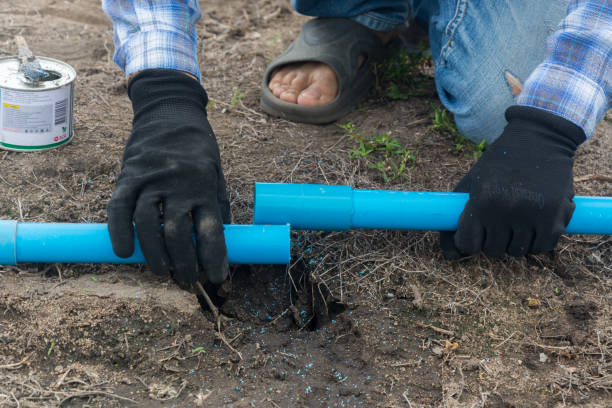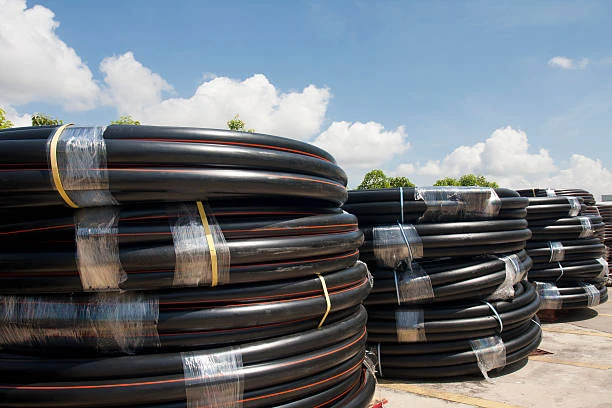Safe and Correct Installation in Electrofusion
When it comes to joining HDPE pipes, nothing beats electrofusion for strength and reliability. But here’s the thing—success in electrofusion depends a lot on how you handle the installation. Even with top-tier pipes made from the best HDPE raw material, a poor fusion job can lead to leaks, pressure failures, or full-blown pipe damage.

So let’s walk through how to get it right. Whether you’re a seasoned installer or just learning the ropes, this guide will help you stay safe, work efficiently, and get a fusion that holds tight for decades.
What Makes Electrofusion So Popular?
Electrofusion lets you join HDPE pipes using special fittings that have built-in electric heating coils. You slide the pipe into the fitting, apply power, and the coils heat the pipe and fitting together until they melt and fuse into one solid piece.
Installers love electrofusion because:
- It works great in tight spaces.
- You don’t need open flames or large fusion machines.
- It gives you clean, leak-free joints.
- It’s ideal for water, gas, and chemical pipelines.
And because manufacturers use high-quality HDPE raw material for both the pipes and fittings, the fused joint becomes just as strong—if not stronger—than the original pipe wall.
Step-by-Step: How to Install Electrofusion Safely and Correctly
Let’s go through the key steps that every installer should follow for a smooth and successful fusion.
1. Use the Right Tools
Before you touch any pipe, make sure your toolkit includes:
- Pipe scraper or rotary peeler
- Pipe clamps or alignment jigs
- Electrofusion control unit (ECU)
- Marker pen
- Clean, lint-free cloths
- Alcohol-based cleaning solution
Don’t substitute or skip tools. Good prep leads to good fusion.
2. Cut the Pipe Cleanly
Use a sharp pipe cutter or saw to cut the pipe square—no angles, no burrs. A clean cut ensures full contact inside the fitting.
3. Mark the Insertion Depth
Slide the fitting over the pipe until it bottoms out. Mark the pipe at the edge of the fitting so you know how far to insert it during fusion.
4. Scrape the Surface Thoroughly
This part matters more than most people think. The outer layer of HDPE builds up oxidation and dirt over time. Use a proper scraper (not sandpaper) to remove at least 0.2mm of the surface. If you skip this, the fusion won’t bond well.
5. Clean It Up
Wipe the scraped area and the inside of the fitting with alcohol wipes or cloth and cleaner. Remove all dust, grease, and moisture. Never touch cleaned surfaces with your bare hands.
6. Clamp Everything in Place
Use pipe clamps or a jig to align the pipes and hold them steady during fusion. Movement ruins the joint. Make sure the pipe goes in up to your insertion mark.
7. Run the Electrofusion Cycle
Connect the fitting to the electrofusion unit. Most fittings come with a barcode or settings sticker—scan or input the details so the machine knows how long to apply heat.
Once you start, don’t move the pipe. Let the cycle finish completely, then allow the joint to cool for at least 10–15 minutes (or whatever the fitting instructions say).
8. Inspect the Joint
Look for uniform melt indicators on the fitting. They usually pop out slightly when the fusion completes. No bulging or burnt spots. If something looks off, don’t bury it—cut it out and redo the joint.
Safety Tips You Shouldn’t Ignore
- Always wear gloves and eye protection.
- Never perform electrofusion on wet or dirty pipe.
- Don’t rush the cooling time.
- Don’t reuse scraped pipe—start over if you mess up the joint.
- Keep your electrofusion unit well-calibrated and clean.
When installers skip these basics, they risk costly failures and dangerous leaks. Don’t gamble with your reputation or your crew’s safety.
Why HDPE Raw Material Quality Matters
Even perfect installation won’t save you if the pipe or fitting itself falls short. That’s why top suppliers use high-grade HDPE raw material like PE100 or PE4710. These materials deliver:
- High pressure resistance
- Long-term crack resistance
- Strong chemical durability
- Reliable fusion behavior
Lower-grade or recycled HDPE might save money upfront, but it could fail during fusion or degrade faster underground. Stick with certified materials, especially for gas, drinking water, or industrial chemicals.
Common Mistakes to Avoid
Even experienced techs sometimes fall into bad habits. Watch out for these common issues:
- Skipping the scraping step
- Using alcohol that’s too diluted or leaves residue
- Letting pipes shift during fusion
- Ignoring manufacturer-specific instructions
- Fusing in rain or extreme cold without protection
Trust us—it’s cheaper and safer to do it right the first time.
Final Thoughts
Electrofusion offers one of the strongest, cleanest ways to join HDPE pipes. But it only works when you follow the right steps, use the proper tools, and pay attention to material quality. Always choose pipes and fittings made from reliable HDPE raw material, and never rush the process. Whether you’re laying gas lines in a city or installing water mains in a rural village, safe fusion protects your project—and your peace of mind.
FAQ – Electrofusion and HDPE Raw Material
Q1: Do I need to scrape the pipe even if it looks clean?
A: Yes! The top layer still contains oxidation, which weakens the bond. Always scrape.
Q2: Can I use electrofusion in the rain?
A: It’s risky. Moisture messes with the fusion. Use a tent or wait for dry weather.
Q3: What’s the best HDPE raw material for pressure systems?
A: Go with PE100 or PE4710—they handle high pressure and last decades.
Q4: How long does a good electrofusion joint last?
A: If you do it right with quality materials, it can last 50 years or more.
Q5: Is electrofusion better than butt fusion?
A: Depends on the job. Electrofusion works better in tight spaces or repairs. Butt fusion handles large runs more efficiently.


















